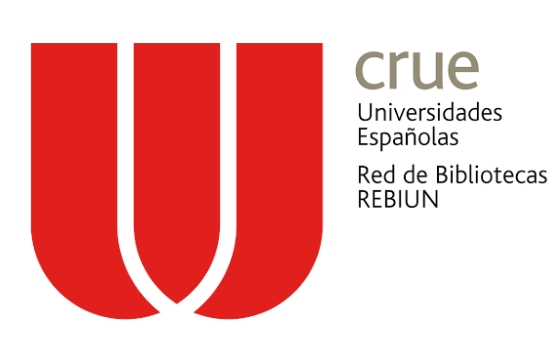Confluence
Palabras clave:
Ethnomathematics, Literature Review, Cognitive Con?uence, Etnomatemática, Revisão de Literatura, Con?uência Cognitiva.Resumen
Abstract:
This position paper argues that ethnomathematics, while not a curriculum (nor a discipline, that is why D’Ambrosio call it a program), is a confluence of ideas and concepts that may lead to different mathematics engagement of our students. Just as water swirls together from multiple sources, so does our cognition when many ideas are brought together, leading to a cognitive confluence. e definition of ethnomathematics, as coined by D’Ambrosio in 1985 sets the foundation. Scholarship from other disciplines is included, as these areas motivate new thinking, new questions, and new perspectives.
Resumo
Este documento argumentativo discute que a etnomatemática, embora não seja um currículo (nem uma disciplina, é por isso que D'Ambrosio a denomina comoum programa), é uma confluência de ideias e conceitos que podem direcionar ao envolvimento matemático diferenciado de nossos alunos. Assim, da mesma maneira que a água forma redemoinhos a partir de fontes múltiplas, a nossa cognição também se desenvolve quando muitas ideias são reunidas e conduzidasa uma confluência cognitiva. A definição de etnomatemática, tal como foicunhada por D'Ambrosio, em 1985, estabeleceu as sua bases. O saber de outras disciplinas também é incluída, pois essas áreas motivam novos pensamentos, novas questões e novas perspectivas
Descargas
Citas
Aikenhead, G. (1997). Toward a First Nations cross-cultural science and technology curriculum. Science Education , 81, 217-238.
Aikenhead, G. (2001). Integrating western and Aborignal sciences: Cross-cultural science teaching. Research in Science Education , 31, 337-355.
Ascher, M. (2002). Mathematics elsewhere: An exploration of ideas across cultures. New Jersey: Princeton University Press.
Ascher, M., & D’Ambrosio, U. (1994). Ethnomathematics: A dialogue. For the Learning of Mathematics , 14(2), 36-43.
Bassanezi, R. (1994). Modelling as a teaching-learning strategy. For the Learning of Mathematics , 14(2), 31-35.
Bassanezi, R. C. (2002). Ensino-aprendizagem com modelagem matemática [Teaching and learning wit mathematical modelling] . São Paulo: Editoria Contexto.
Bing, R. H. (1957). Point set topology. In F. Staf (Ed.), Insights into Modern Mathematics , vol. 23 (pp. 306-335). Washington, D.C.: NCTM.
Bishop, A. J. (1991). Mathematical enculturation. Dordrecht, e Netherlands: Kluwer Academic Publishers.
Bishop, A. J. (1994). Cultural conflicts in mathematics education: Developing a research agenda. For the Learning of Mathematics , 14(2), 15-18.
Costa, V. B. (1995). When science is "another world": Relationships between worlds of family, friends, school, and science. Science Education , 79, 313-333.
D'Ambrosio, U. (1985). Ethnomathematics and its place in the history and pedagogy of mathematics. For the Learning of Mathematics--An International Journal of Mathematics Education , 5(1), 44-48.
D'Ambrosio, U. (2016). An overview of the history of Ethnomathematics. In M. Rosa, U. D’Ambrosio, D. C. Orey, L. Shirley, W. V. Alangui, P. Palhares, & M. E. Gavarrete (Autores), Current and future perspectives of Ethnomathematics as a program (pp. 5-10), New York: Springer
Engblom-Bradley, C. (2006). Learning the Yup'ik way of navigation: Studying time, position, and direction. Journal of Mathematics and Culture , 1(1), 90-126.
Freire, P. (1996). Pedagogy of the oppressed. London: Penguin.
Gee, J. P. (1996). Social linguistics and literacies: Ideology in discourses (2nd ed.). London; Bristol, PA: Taylor & Francis.
Gerdes, P. (1999). Geometry om Aica: Mathematical and educational explorations. USA: Mathematical Association of America.
Hoyles, C., Noss, R., & Pozzi, S. (2001). Proportional reasoning in nursing practice. Journal for Research in Mathematics Education , 32(1), 4-27.
Jaworski, B. (2008). Mathematics teacher educator learning and development. In B. Jaworski & T. Wood (Eds.), e International Handbook of Mathematics Teacher Education Volume 4: e Mathematics Teacher Educator as a Developing Professional (pp. 1-13). Vol. 4, Rotterdam: Sense Publishers.
Kluckhohn, C. (1949). Mirror of man . New York: McGraw Hill Book Company Inc.
Leap, W. L. (1981). Does Indian math (still) exist? e Journal of the Linguistic Association of the Southwest , 4(2), 196-213.
Lipka, J., Sharp, N., Adams, B., & Sharp, F. (2007). Creating a third space for authentic biculturalism: Examples from math in a cultural context. J ournal of American Indian Education , 46(3), 94-115.
Martin, D. B. (2012). Learning mathematics while Black. e Journal of Educational Foundations , 26(1-2), 47-66.
Massarwe, K., Verner, I., & Bshouty, D. (2010). An ethnomathematics exercise in analyzing and constructing ornaments in geometry class. Journal of Mathematics and Culture , 5(1), 1-20.
Masingila, J. O. (1993). Learning from mathematics practice in out-of-school situations. For the Learning of Mathematics , 13(2), 18-22.
Millroy, W. L. (1992). An ethnographic study of the mathematical ideas of a group of carpenters . Reston: National Council of Teachers of Mathematics.
Naresh, N. (2012). Bus conductors' use of mental computation in everyday settings - is it their ethnomathematics?. Journal of Mathematics and Culture, 6(1), 308-332.
National Research Council. (1989). Everybody counts: A report to the nation on the future of mathematics education. Washington, DC: National Academy Press.
Nunes, T., Schliemann, A., & Carraher, D. (1993). Street mathematics and school mathematics. New York: Cambridge University Press.
Orey, D. C., & Rosa, M. (2015). ree approaches in the research field of ethnomathematics: Emic (local), etic (global, and dialogical (glocal). Revista Latinoamericana de Etnomatemática , 8(2), 364-380.
Peat, D. (1994). Lighting the seventh fire . New York: Carol Publishing Group.
Pike, K. L. (1967). Language in Relation to a Unified eory of the Structure of Human Behavior. e Hague, Paris: Mouton.
RAND Mathematics Study Panel. (2003). Mathematics proficiency for all students: Toward a strategic research and development program in mathematics education. Santa Monica, CA: RAND.
Raum, O. F. (1938). Arithmetic in Aica . London: Evans Bros.
Rosa, M., & Orey, D. C. (2013). Ethnomodelling as a research lens on ethnomathematics and modelling. In G. Stillman, G. Kaiser, W. Blum & J. Brown (Eds.), Teaching mathematical modelling: Connecting to research and practice (pp. 117-130). New York: Springer.
Rosa, M., & Orey, D. C. (2016). State of the art in Ethnomathematics. In M. Rosa, U. D’Ambrosio, D. C. Orey, L. Shirley, W. V. Alangui, P. Palhares, & M. E. Gavarrete (Autores), Current and future perspectives of Ethnomathematics as a program (pp. 11 - 38), New York: Springer.
Rosa, M., & Shirley, L. (2016). Introduction. In M. Rosa, U. D’Ambrosio, D. C. Orey, L. Shirley, W. V. Alangui, P. Palhares, & M. E. Gavarrete (Autores), Current and future perspectives of Ethnomathematics as a program (pp. 1 - 4), New York: Springer
Saxe, G. B. (1988). Candy selling and math learning. Educational Researcher , 17(6), 14-21
Shockey, T. L, (1999). e mathematical practices of a group of thoracic cardiovascular surgeons. Unpublished Dissertation. University of Virginia, Charlottesville, VA.
Shockey, T. L. (2006). Le Ventricle Reduction through an Ethnomathematics Lens. For the Learning of Mathematics: An International Journal of Mathematics Education , 26(1), 2-6.
Shockey, T.L, Orey, D., & Rosa, M. (2015) A Spring Ethnomathematics Tour in Brasil. Notices of the North American Study Group on Ethnomathematics , 8 (1), 8 – 11.
Shockey, T. L., & Mitchell, J. B. (2016). An ethnomodel of a traditional penobscot summer dwelling. International Journal for Research in Mathematics Education , 6(1), 178-195.
Shockey, T. L, & Silverman, F. L. (2016). Ten Years Later: A Look Back on the History of the Journal of Mathematics and Culture. Journal of Mathematics and Culture, 10(2), 12-36.
Staats, S. (2006). e Case for Rich Contexts in Ethnomathematics Lessons. Journal of Mathematics and Culture , 1(1), 39-56
U.S. Department of Education. (2008). Foundations of success: Final report of the national mathematics advisory panel. Washington, D.C.: U.S. Government Printing Office.
Whorf, B. L. (1956a). Linguistics as an exact science. In J. B. Carroll (Ed.), Language, thought and reality: Selected writings of Benjamin Lee Whorf (pp. 220-232). Cambridge, MA: e M.I.T. Press.
Whorf, B. L. (1956b). Language, mind, and reality. In J. B. Carroll (Ed.), Language, thought and reality: Selected writings of Benjamin Lee Whorf (pp. 246-270). Cambridge, MA: e M.I.T. Press.
Zaslavsky, C. (1994). Africa Counts and ethnomathematics. For the Learning of Mathematics , 14(2), 3-8.
Descargas
Publicado
Cómo citar
Número
Sección
Licencia
Derechos de autor
Una vez que el artículo es aceptado por la Revista Latinoamericana de Etnomatemática, los/as autores ceden los derechos para publicar y distribuir el texto electrónicamente, así como para archivarlo y hacerlo accesible en línea.
Los autores podrán distribuir su propio material sin solicitar permiso a la Revista Latinoamericana de Etnomatemática, siempre que se mencione que la versión original se encuentra en http://www.revista.etnomatematica.org
Copyright © 2008, Revista Latinoamericana de Etnomatemática
Todos los contenidos de la Revista Latinoamericana de Etnomatemática se publican bajo la Licencia Creative Commons Atribución 4.0 Internacional y pueden ser usados gratuitamente dando los créditos a los autores y a la Revista, como lo establece esta licencia.











